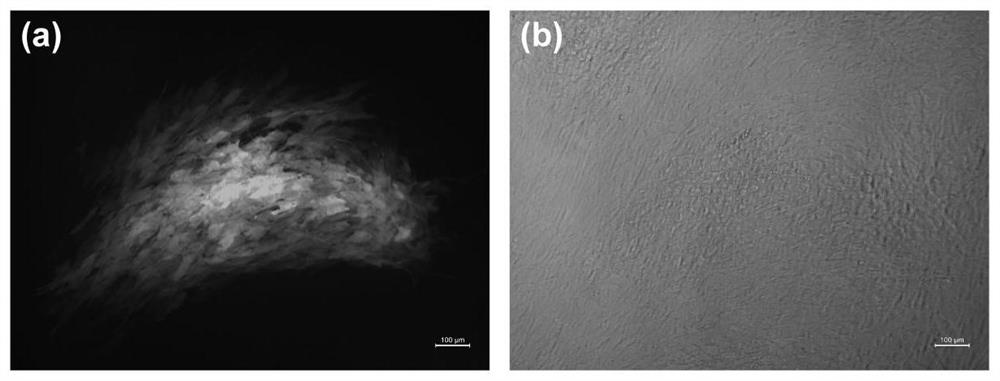Recombinant goatpox virus capable of carrying out coexpression on orf virus B2L and F1L protein
A goat pox virus, co-expression technology, applied in the direction of virus, viral peptide, virus/bacteriophage, etc., can solve the problem of destroying expression
- Summary
- Abstract
- Description
- Claims
- Application Information
AI Technical Summary
Problems solved by technology
Method used
Image
Examples
Embodiment 1
[0021] Example 1. Construction of recombinant goat pox virus transfer vector pLSEG-BF
[0022] The constructed pLSEG-BF model diagram is as follows figure 1 shown. The left arm of the TK gene (TK L ) and right arm (TK R ) are located upstream and downstream of the exogenous sequence, respectively, and the two are homologous recombination sites of GTPV; the directions of the ORFV B2L and F1L genes are opposite, the upstream is the p7.5K promoter, and the downstream is the "ATTTTTAT" early transcription termination signal ; The eGFP screening marker is transcriptionally regulated by the p11K promoter. The full length of the recombinant vector is 8 222bp, and it is resistant to ampicillin.
Embodiment 2
[0023] Example 2. Construction of GTPV-BF-eGFP
[0024] Inoculate GT cells in a six-hole cell culture plate, culture to 80-90% dense monolayer, inoculate GTPV AV41 vaccine strain, and act at 37°C for 2 hours. Prepare solution I according to the ratio of 150 μL serum-free Opti-MEM and 6 μL Lipofectamine 2000 per well; prepare solution II according to the ratio of adding 150 μL serum-free Opti-MEM and 3 μg pLSEG-BF per well. Add solution II to solution I dropwise, mix gently, and let stand at room temperature for 20 min. During this period, the virus liquid in the six-well plate was discarded, 1 mL of Opti-MEM was added to each well, and the mixture of liposomes and pLSEG-BF after incubation was added dropwise. 37°C 5% CO 2 Culture in an incubator for 6 hours, discard the transfection solution, add cell maintenance solution, and cultivate for 72–96 hours. Usually 24 hours after transfection, green fluorescence can be clearly observed in the cell monolayer, while the control w...
Embodiment 3
[0025] Example 3. Purification of GTPV-BF-eGFP
[0026] GTPV-BF-eGFP was isolated from the parent virus population by sequential plaque purification. Freeze and thaw the recombined virus solution twice, press 10 –1 to 10 –6 Serial dilutions were used to inoculate GT cells in six-well plates at 37°C in 5% CO 2 Cultivate in the incubator for 2h. Aspirate the virus liquid, add 2 mL of maintenance medium containing 1% low-melting point agarose to each well, and continue culturing for 5–7 days. During the culture process, green fluorescent plaques ( figure 2 a). Fluorescent plaques were picked out, added to 500 μL medium, frozen and thawed twice, for the next round of plaque purification, repeated 8 times in a row.
PUM
 Login to View More
Login to View More Abstract
Description
Claims
Application Information
 Login to View More
Login to View More - R&D
- Intellectual Property
- Life Sciences
- Materials
- Tech Scout
- Unparalleled Data Quality
- Higher Quality Content
- 60% Fewer Hallucinations
Browse by: Latest US Patents, China's latest patents, Technical Efficacy Thesaurus, Application Domain, Technology Topic, Popular Technical Reports.
© 2025 PatSnap. All rights reserved.Legal|Privacy policy|Modern Slavery Act Transparency Statement|Sitemap|About US| Contact US: help@patsnap.com



